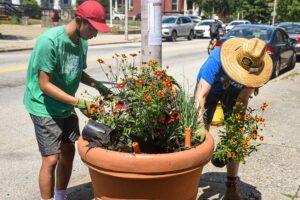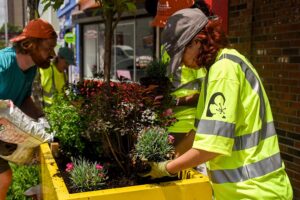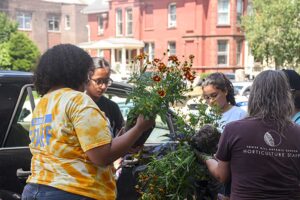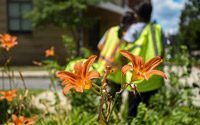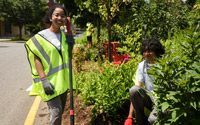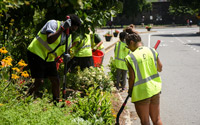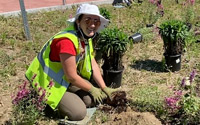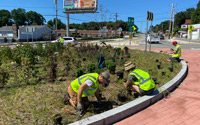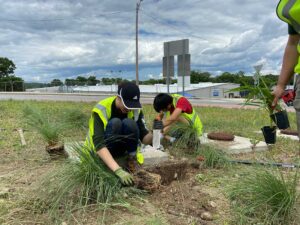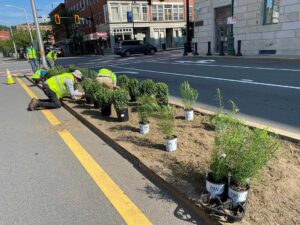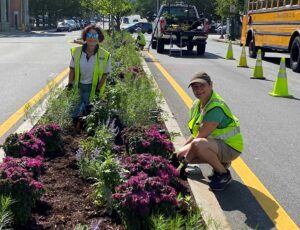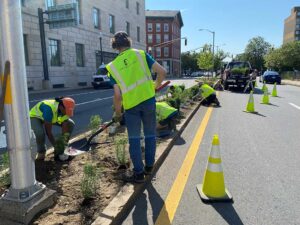URBAN GREENING INITIATIVES
Access to green space is essential for a healthy community. Beautifying with trees, shrubs, and planters also instills a sense of neighborhood pride. But beyond serving our mental and physical wellbeing, greening supports the urban ecosystem and can help make cities more resilient in the face of a changing climate by combating urban heat island effect, mitigating stormwater, fostering biodiversity, and supporting pollinator populations.
The Garden works with community members and organizations to identify areas where greening efforts are wanted and needed in the City of Worcester. Collaborative projects connect people to plants within their neighborhoods and encourage environmental stewardship. From medians and rotaries to large-scale planters, sites are designed with many endemic plants that provide food and habitat resources for insects and birds.
PARTNERSHIP SPOTLIGHTS
Along some city streets, it’s not feasible to plant trees in the ground because there aren’t designated tree wells or other medians available for planting. The Garden’s program Planters for People addresses this problem by placing large scale planters directly on sidewalks and filling them with trees, shrubs, and flowering plants. The program was first piloted in 2021 with six planters in Worcester’s Main South neighborhood. In 2022, with the help of Main South CDC and the Regional Environmental Council, the program expanded to include the six original planters as well as 12 more that had been going unused in the neighborhood. In 2023, the program continues to grow, with 12 more new planters headed to Main South. Three planters are also being installed along Pleasant Street in collaboration with the Pleasant Street Community Neighborhood Network, bringing the total for 2023 to 33.
At the Franklin Street median, a narrow strip in downtown Worcester between the Worcester Public Library and the YWCA, passersby find a kaleidoscope of color. Pollinators enjoy Allium, yarrow, black-eyed Susan’s, hibiscus, coreopsis, and more. In addition to donating the plants for this median, the Garden maintains them each summer with the help of volunteers including students from the WooServes Summer Youth Service Institute, and the Worcester Youth Leadership Institute, a program of the Worcester Regional Chamber of Commerce.
The Garden adopted the Lincoln Street Rotary in 2022 to create a burst of color in this corner of Worcester. With the soil here highly disturbed by urban development and no irrigation, plant choice was crucial to this project’s success. The Garden selected salt and drought-tolerant perennials like butterfly weed, anise hyssop, and bee balm to attract butterflies and other pollinators. For added flair, Horticulture Outreach Manager Amy Nyman designed this garden space as a swirl to reflect the motion of the traffic. The transformation was remarkable.
This narrow median is located near the former site of the Worcester RMV. It’s planted and maintained by Garden volunteers and summer interns. Three sweetgum trees increase shade canopy and combat urban heat island effect. Plants were chosen to be drought-tolerant and salt tolerant and to need little additional watering after establishment. Globe thistle, Russian sage, prairie aster, and lead plant are all part of a design that draws on a primarily blue palette with violet accents.


